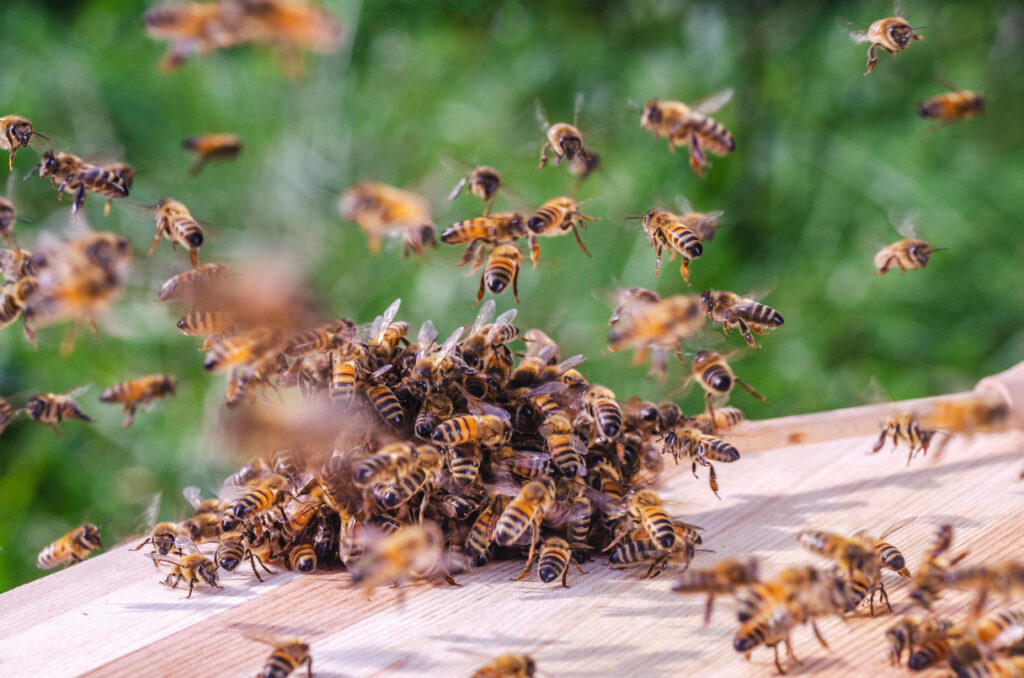
Honeybee swarming season in Scripps Ranch
By Denise Bienias
Honeybees are wonderful, important insects. They pollinate 80 percent of all flowering plants, including more than 130 types of fruit and vegetables, are the sole pollinator for our California-grown almonds (80
percent of the world’s crop) and are the only insect producing human food, namely honey.
In the spring, a feral (wild) or managed honeybee colony can become congested or overpopulated in its current space. As a result, the colony splits into two or more distinct colonies. This is called swarming, a honeybee colony’s natural means of reproduction.
Urban beekeepers have techniques to prevent their hives from swarming, but feral hives must and will swarm when overpopulated. The current queen and half of the colony will swarm on a sunny day, sometimes after several cold or rainy days, in search of a new home. This is a magnificent spectacle: thousands of buzzing bees flying together, ten feet above ground or higher, as a swarm. This swarm may land on a temporary resting spot until scout bees locate a permanent home.
This landed swarm now becomes a bee cluster, or bivouac, with the worker bees on the outside surrounding the queen in the middle for protection from weather and predators. This is the cluster of bees that you might see, for example, in a tree on your property.
When seeking a new home, bees are very docile because they do not have a home to protect. Left alone and unprovoked, this cluster is gentle and can be easily captured by a beekeeper for safe relocation to a managed hive if needed. It is usually not necessary to remove a swarm unless it threatens nearby foot traffic or allergic individuals. The swarm will fly away on its own within hours or days, after the scouts find a new cavity to move into. In the wild, bees typically find a large hollow tree cavity, but in our populated neighborhoods, they might have to use vacated owl boxes, hose boxes, water meter boxes, garbage cans, composting containers, fence spaces, shed spaces, garage spaces, attics or wall spaces, to name a few common choices. Once a swarm moves into a satisfactory cavity and the queen starts to lay eggs, this swarm becomes a new colony.
This amazing process can happen within 24 hours. As this new colony grows, it can become more defensive as it protects its new home. If it doesn’t endanger animals, property owners, or neighbors, it can be left as a natural hive. However, if it becomes a safety issue or a nuisance, you can find qualified live bee removal services that who will safely and humanely collect and relocate the colony at sandiegobeekeepingsociety.com.
Author Denise Bienias, dbeesbackyardhives@gmail.com, is a four-year Scripps Ranch beekeeper and vice president of the San Diego Beekeeping Society.
To learn more about Sustainable Scripps Ranch, visit scrippsranch.org/ssr or e-mail SustainableSR@scrippsranch.org.
